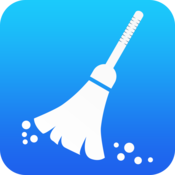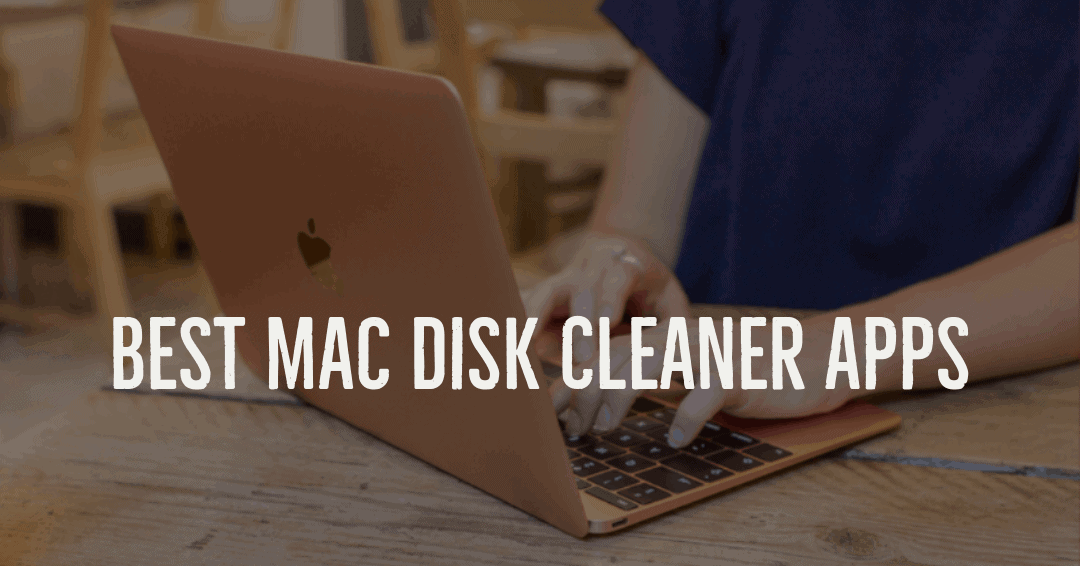Best Free Disc Cleaner For Mac

- Disk Cleaner Free
- Best Cleaners For Mac
- Mac Os Disk Cleaner
- Best Mac Disk Cleaner
- Free Disk Cleaner For Mac
A new Mac always seems to be lightning quick. But then it might slow down up to 17% when its disk is near full (confirmed by MacWorld in a test). And there we got a whole world of Mac optimization apps. Some of them are good enough that even Apple employees use them (Guy Kawasaki, for one). So here are some absolutely essential Mac optimizers to check in 2020.
These are top 3 optimizers that look most optimistic to us (sorry for the pun). We've chosen these among hundreds of others mentioned on Mac Forums.
Mac cleaner software is a third party utility that needs to be installed and run on your Mac. These applications will automatically clean your Mac and free up disk space to make room for other programs to run. They also have a lot of other features which we will discuss separately for each software. So let’s go ahead and check out the best.
| Rating | Name | Features | Info |
|---|---|---|---|
| 1 | CleanMyMac X | Includes tools for optimizing your Mac, securely deleting files, and scanning for malware. | Link |
| 2 | AVG | Quick scan and deep cleaning of all kinds of junk | Link |
| 3 | Onyx | Allows you to adjust parameters that would normally need to be set in Terminal | Link |
All three are aimed at basic Mac housekeeping. And now, let's dive into these options and then we'll analyze a few more relevant alternatives.
Best Mac Optimizer software reviewed
With drag and drop feature, visual and textual information about disk usage, CleanMyMac X is the best Mac speed boost app. It is easy to install and simple to use. Using it you can verify the startup disk and structure of the files to configure parameters. The most probable reason is junk files. These cause your computer being slower. Gilisoft free disk cleaner is a free disk cleaning software for Windows which removes all the junk files from your disk. MacCleaner Pro is a suite of six applications developed to clean up and speed up your Mac. It offers tools to find and remove duplicate files and folder (including the ability to merge Similar.
Made by independent macOS developer, MacPaw, this app tops our chart.
1. CleanMyMac X
This app, which is notarized by Apple, is absolutely gorgeous visually. But it also sports 49 tools to optimize a Mac in one app. It has a free version you can download and play around with.
Inside, you’ll find a full range of tools that will declutter your Mac, make it run faster, and even scan it for malware and remove whatever it finds. One of the great things about CleanMyMac X is that you choose how much control you take over what it removes.
In terms of Mac optimization, you can:
- Free up RAM memory
- Disable heavy memory consumers
- Run Maintenance scripts
It’s worth checking, anyway if you want to improve your Mac’s performance.
2. AVG Cleaner
AVG Cleaner has two functions — to find and remove “junk”’ files one you Mac and to identify duplicate files and make it easy to remove them. Best keyboard and mouse for mac. The files AVG Cleaner tracks down include cache files from web browsers, apps, photos, and videos; log files; download history; broken downloads; and Trash contents.
When you launch the app, you’ll see it has a clean, modern interface that gives you the option of scanning your Mac for files to clean, or scanning for duplicates. Once you’ve chosen the Disc Cleaner and the scan is complete, you can press a button to clean up the files it has found or view them in more detail and decide which to delete and which to keep. If you choose to scan for duplicates, AVG Cleaner will ask you which folders you want to scan and then show you what it found.
AVG Cleaner is free, l looks great, and works well. However, compared with CleanMyMac X, it lacks many features. These include a malware removal tool, secure file deletion, optimization tools and an app uninstaller.

3. Drive Genius
Drive Genius started out many years ago as a tool for monitoring the performance of your drive, warning you of any potential problems and allowing you to fix them. It has evolved into a tool for optimizing performance and cleaning up drives, as well as keeping it safe.
Some of its features, such as re-partition, rebuild, and de-fragment, don’t work on APFS drives, but the others do. Those other tools include a malware scanner and removal tool, a secure erase utility, and tools for finding and removing duplicate and large files. In addition to those, Drive Genius still has tools for identifying potential problems that could lead to drive failure and allows you to fix them.
It’s not as user-friendly as Sensei, and doesn’t include an application uninstaller and tools for removing login items and launch agents.
4. OnyX
Like most of the apps listed here, OnyX is more than just optimization software for your Mac. It also has a number of tools for cleaning your Mac. However, OnyX also does something that no other tool listed here does: it allows you to adjust settings on your Mac that are otherwise only available through the Terminal app. It’s more of a customizer for your macOS.
Whether you want to rebuild a database or index, or just changed the default location or file format for screenshots, you can do it in OnyX. In terms of optimization tools, OnyX can clean up system files and browser data, rebuild Spotlight and Launch Services databases, run maintenance scripts and clean up recent items lists.
It doesn’t have a secure file deletion tool or malware scanner, however. And it’s nowhere near as user friendly as tools we’ve described above. If you like playing around with settings and getting under the hood of your Mac, though, it’s a good choice.
5. macOS Manage Storage
Manage Storage is a feature that’s built into recent versions of macOS. To access it, click on the Apple menu, then About this Mac> Storage> Manage Storage.
When you do that you’ll see a list of categories on the left-hand side of the window that opens. At the top is Recommendations. This is where macOS helps you easily free up storage space by recommending what to get rid of. For example, it might recommend that you store files in iCloud and only keep recent ones on your Mac, or that you allow the OS to delete Apple TV downloads you’ve already watched.
The other categories cover things like Mail attachments, Garageband sound libraries, podcasts, and iOS backups. You just click on each section in turn and follow the advice in the window.
Manage Storage is a very useful tool and can certainly help free up storage space. However, it is not a replacement for a tool like CleanMyMac X because there is no app uninstaller and there are no tools to remove junk files or optimize performance.
6. CCleaner
CCleaner is one of the oldest cleaner tools around, having been available on the Mac for nearly a decade and on Windows before that. It offers tools to get rid of junk files cluttering up your Mac, remove cookies, history files, and other web browser data, and disable login items and launch agents. It also has an app uninstaller, and the professional version offers real-time protection against potentially harmful files you may download.
Like most tools here, you can choose to follow its recommendations and remove files with just a few clicks, or review the files it finds and choose which to remove yourself.
CCleaner has many of the tools available in CleanMyMac X. However, it’s not as easy to use, in our opinion, thanks to its less friendly user interface. It also doesn’t have a tool to allow you to quickly see what files are occupying space on your Mac, like CleanMyMac X’s Space Lens, or a way of securely shredding sensitive files.
7. Disk Clean Pro
Disk Clean Pro offers many of the same tools as the other cleaners here. You can use its automated utilities to quickly get rid of junk files, logs, crash reports and partial downloads. And you can also use it to identify and remove duplicate files, old files, large files and old downloads. There are also tools to remove browser files, aloud backups and mail downloads.
Like CCleaner, however, its interface isn’t the friendliest. Also, there are no tools for scanning for malware, securely deleting files, or uninstalling apps.
Does Mac optimization involve cleaning?
Many of the tools above belong to the category of cleaners, so why place them here? To answer that, we should define “optimization” more clearly. If optimization means improving the performance, it does entail a bit of cleaning that is improving something by elimination. To optimize any computer, one should start with removing blockages, massive unwanted objects, and apps that eat up a lot of memory.
There are lots of applications that can optimize your Mac’s performance and make it run more smoothly. Most of these apps are paid, but you can get away with a free version in some cases.
We would rather pick CleanMyMac X for the sheer number of features and its looks but the choice is yours.
Optimized Storage helps you save storage space space by storing your content in iCloud and making it available on demand: How to do a screen shot on mac.
- When storage space is needed, files, photos, movies, email attachments, and other files that you seldom use are stored in iCloud automatically.
- Each file stays right where you last saved it, and downloads when you open it.
- Files that you’ve used recently remain on your Mac, along with optimized versions of your photos.
If you haven't yet upgraded to macOS Sierra or later, learn about other ways to free up storage space.
Find out how much storage is available on your Mac
Choose Apple menu > About This Mac, then click Storage. Each segment of the bar is an estimate of the storage space used by a category of files. Move your pointer over each segment for more detail.
Click the Manage button to open the Storage Management window, pictured below.
Manage storage on your Mac
The Storage Management window offers recommendations for optimizing your storage. If some recommendations are already turned on, you will see fewer recommendations.
Store in iCloud
Click the Store in iCloud button, then choose from these options:
- Desktop and Documents. Store all files from these two locations in iCloud Drive. When storage space is needed, only the files you recently opened are kept on your Mac, so that you can easily work offline. Files stored only in iCloud show a download icon , which you can double-click to download the original file. Learn more about this feature.
- Photos. Store all original, full-resolution photos and videos in iCloud Photos. When storage space is needed, only space-saving (optimized) versions of photos are kept on your Mac. To download the original photo or video, just open it.
- Messages. Store all messages and attachments in iCloud. When storage space is needed, only the messages and attachments you recently opened are kept on your Mac. Learn more about Messages in iCloud.
Storing files in iCloud uses the storage space in your iCloud storage plan. If you reach or exceed your iCloud storage limit, you can either buy more iCloud storage or make more iCloud storage available. iCloud storage starts at 50GB for $0.99 (USD) a month, and you can purchase additional storage directly from your Apple device. Learn more about prices in your region.
Optimize Storage
Click the Optimize button to save space by automatically removing watched movies and TV shows. When storage space is needed, movies or TV shows that you purchased from Apple and already watched are removed from your Mac. Click the download icon next to a movie or TV show to download it again.
Disk Cleaner Free
Your Mac will also save space by keeping only recent email attachments on this Mac when storage space is needed. You can manually download any attachments at any time by opening the email or attachment, or saving the attachment to your Mac. Gifted 1 1 3.
Optimizing storage for movies, TV shows, and email attachments doesn't require iCloud storage space.
Empty Trash Automatically
Empty Trash Automatically permanently deletes files that have been in the Trash for more than 30 days.
Reduce Clutter
Reduce Clutter helps you identify large files and files you might no longer need. Fs 1 4 1 – note manager position. Click the Review Files button, then choose any of the file categories in the sidebar, such as Applications, Documents, Music Creation, or Trash.
You can delete the files in some categories directly from this window. Other categories show the total storage space used by the files in each app. You can then open the app and decide whether to delete files from within it.

Best Cleaners For Mac
Learn how to redownload apps, music, movies, TV shows, and books.
Where to find the settings for each feature
The button for each recommendation in the Storage Management window affects one or more settings in other apps. You can also control those settings directly within each app.
- If you're using macOS Catalina or later, choose Apple menu > System Preferences, click Apple ID, then select iCloud in the sidebar: Store in iCloud turns on the Optimize Mac Storage setting on the right. To turn off iCloud Drive entirely, deselect iCloud Drive.
- If you're using macOS Mojave or earlier, choose Apple menu > System Preferences, click iCloud, then click Options next to iCloud Drive. Store in iCloud turns on the Desktop & Documents Folders and Optimize Mac Storage settings.
- In Photos, choose Photos > Preferences, then click iCloud. Store in iCloud selects iCloud Photos and Optimize Mac Storage.
- In Messages, choose Messages > Preferences, then click iMessage. Store in iCloud selects Enable Messages in iCloud.
- If you're using macOS Catalina or later, open the Apple TV app, choose TV > Preferences from the menu bar, then click Files. Optimize Storage selects “Automatically delete watched movies and TV shows.”
- In you're using macOS Mojave or earlier, open iTunes, choose iTunes > Preferences from the menu bar, then click Advanced. Optimize Storage selects “Automatically delete watched movies and TV shows.”
- In Mail, choose Mail > Preferences from the menu bar, then click Accounts. In the Account Information section on the right, Optimize Storage sets the Download Attachments menu to either Recent or None.
Empty Trash Automatically: From the Finder, choose Finder > Preferences, then click Advanced. Empty Trash Automatically selects “Remove items from the Trash after 30 days.”
Other ways that macOS helps automatically save space
With macOS Sierra or later, your Mac automatically takes these additional steps to save storage space:
- Detects duplicate downloads in Safari, keeping only the most recent version of the download
- Reminds you to delete used app installers
- Removes old fonts, languages, and dictionaries that aren't being used
- Clears caches, logs, and other unnecessary data when storage space is needed
Mac Os Disk Cleaner
How to free up storage space manually
Best Mac Disk Cleaner
Even without using the Optimized Storage features described in this article, you can take other steps to make more storage space available:
Free Disk Cleaner For Mac
- Music, movies, and other media can use a lot of storage space. Learn how to delete music, movies, and TV shows from your device.
- Delete other files that you no longer need by moving them to the Trash, then emptying the Trash. The Downloads folder is good place to look for files that you might no longer need.
- Move files to an external storage device.
- Compress files.
- Delete unneeded email: In the Mail app, choose Mailbox > Erase Junk Mail. If you no longer need the email in your Trash mailbox, choose Mailbox > Erase Deleted Items.
Learn more
- The Storage pane of About This Mac is the best way to determine the amount of storage space available on your Mac. Disk Utility and other apps might show storage categories such as Not Mounted, VM, Recovery, Other Volumes, Free, or Purgeable. Don't rely on these categories to understand how to free up storage space or how much storage space is available for your data.
- When you duplicate a file on an APFS-formatted volume, that file doesn't use additional storage space on the volume. Deleting a duplicate file frees up only the space required by any data you might have added to the duplicate. If you no longer need any copies of the file, you can recover all of the storage space by deleting both the duplicate and the original file.
- If you're using a pro app and Optimize Mac Storage, learn how to make sure that your projects are always on your Mac and able to access their files.

Best Free Disc Cleaner For Mac
UNDER MAINTENANCE